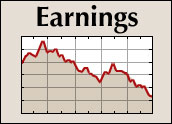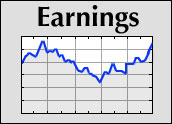The Internet has topped television as the first choice of media by 18- to 54-year-olds, according to a study released today by the Online Publishers Association (OPA).

The Generational Media Study — the fourth in a series of research reports aimed at providing a detailed view of 18- to 34-year-old media consumers — shows that 45.6 percent of respondents in the 18- to 54-year-old range picked the Internet as their first media choice, followed by 34.6 percent who chose television first.
The study also shows that online media rate highly in various head to head comparisons with offline media across all age groups. As one example, the results show that 97 percent of the respondents believe online offerings are the same or better than magazines for finding information about products and music.
The study was conducted online by Frank N. Magid Associates. It was designed to examine how the Internet, television, radio, newspapers and magazines compare across the generations on a range of attitudinal measures.
It surveyed 1,235 people online, each asked to compare qualitative aspects of consuming content online versus offline.
Media-Oriented Activities
“Consumers continue to move beyond purely functional uses of the Internet into more media-oriented activities, such as reading stories, looking at photos and watching video,” Michael Zimbalist, president of the Online Publishers Association, said. “These results show how receptive people of all ages are to the Internet as a medium and not just a tool.”
The survey found that the Internet and television are the top two media choices among 18- to 54-year-olds.
According to the results, 83 percent of the respondents said reading a story on the Internet is the same or better than reading one in a newspaper.
Sixty-seven percent said that watching a short video clip online is the same or better than watching highlights on television. However, longer-format videos compared less favorably online, with 63 percent of the respondents still favoring television for watching longer video programming.
After the Internet and television, the next choice of medium turned out to be books, at 7.5 percent, followed by radio and newspapers in a tie, at 3.2 percent, videos/DVDs, at 2.8 percent, video/computer games, at 2.1 percent, and magazines, at .9 percent.
Time Spent
The Internet proved to be the top media choice for 18- to 24-year-olds, with 50.5 percent choosing it, compared to 28.5 percent who chose television.
Among all respondents, the Internet and television were by far the most frequently used media.
Forty-one percent of the 18- to 54-year-olds and 52 percent of the 18- to 24-year-olds said they use the Internet (exclusive of e-mail, IM and chat) and television between two and five hours per day during the week.
Overall, 19 percent reported using the Internet more than five hours per day during the week, while 15 percent report watching more than five hours of television per day.
The Internet was the only medium to show net growth in perceived time spent. Forty-seven percent of respondents indicated that they spend more time using the Internet now compared to a year ago. At the same time, 35 percent of respondents indicated that they spend less time playing video/PC games, and 28 percent said they spend less time watching television.
The survey results show the Internet is used more for informational purposes, while television is used more for entertainment and relaxation.
Important Part of Day
Seventy-three percent of respondents said the Internet is an important part of their day and helps them keep up with topics they are interested in, while 65 percent said it provides them with useful information about products and services.
Eighty-six percent said they watch television for entertainment, with 65 percent indicating that it is an important way for them to relax.
There were no significant differences between age groups in their attitudes toward the Internet, television and magazines. However, the importance of newspapers differed significantly by age group, with 38 percent of 35- to 54-year-old newspaper readers indicating that reading the newspaper is an important part of their day, compared to only 17 percent of 18- to 24-year-old readers.
Attitudes toward newspapers were generally most favorable among the 35- to 54-year-old demographic, with one notable exception — trust. Fifty percent of 18- to 24-year-old newspaper readers said they trust the news they get in newspapers, compared to only 35 percent of 35- to 54-year-old readers.
Survey Sample
Interestingly, 45 percent of 18- to 24-year-olds indicated that they would turn to the Internet first for national news, as compared to 29 percent of 35- to 54-year-olds, while 58 percent would turn to the Internet first for weather, as compared to 49 percent of 35- to 54-year-olds, and 51 percent for sports, as compared to 41 percent of 35- to 54-year-olds.
The survey sample consisted of a nationally representative gender distribution within three age groups: 18- to 24-year-olds, 25- to 34-year-olds and 35- to 54-year-olds.
Founded in June 2001, the Online Publishers Association is an industry trade organization whose mission is to advance the interests of online publishers before the advertising community, the press, the government and the public.































































Social Media
See all Social Media